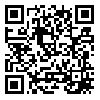Volume 73, Issue 2 (May 2015)
Tehran Univ Med J 2015, 73(2): 117-126 |
Back to browse issues page
Download citation:
BibTeX | RIS | EndNote | Medlars | ProCite | Reference Manager | RefWorks
Send citation to:



BibTeX | RIS | EndNote | Medlars | ProCite | Reference Manager | RefWorks
Send citation to:
Moradi Moghaddam O, Niyakan Lahiji M, Hassani V, Kazemi Gezik F, Farazi E. Relationship between type of brain injury with Bispectral Index monitoring in intubated ICU trauma patients. Tehran Univ Med J 2015; 73 (2) :117-126
URL: http://tumj.tums.ac.ir/article-1-6608-en.html
URL: http://tumj.tums.ac.ir/article-1-6608-en.html
Omid Moradi Moghaddam * 
 1, Mohammad Niyakan Lahiji2
1, Mohammad Niyakan Lahiji2 
 , Valiollah Hassani2
, Valiollah Hassani2 
 , Farid Kazemi Gezik3
, Farid Kazemi Gezik3 
 , Ehsan Farazi2
, Ehsan Farazi2 


 1, Mohammad Niyakan Lahiji2
1, Mohammad Niyakan Lahiji2 
 , Valiollah Hassani2
, Valiollah Hassani2 
 , Farid Kazemi Gezik3
, Farid Kazemi Gezik3 
 , Ehsan Farazi2
, Ehsan Farazi2 

1- Department of Critical Care, Anesthesiology Department, Rasoul Akram Medical Complex, Iran University of Medical Sciences, Tehran, Iran. , moradimoghadam@yahoo.com
2- Department of Critical Care, Anesthesiology Department, Rasoul Akram Medical Complex, Iran University of Medical Sciences, Tehran, Iran.
3- Department of Neurosurgery, Rasoul Akram Medical Complex, Iran University of Medical Sciences, Tehran, Iran.
2- Department of Critical Care, Anesthesiology Department, Rasoul Akram Medical Complex, Iran University of Medical Sciences, Tehran, Iran.
3- Department of Neurosurgery, Rasoul Akram Medical Complex, Iran University of Medical Sciences, Tehran, Iran.
Abstract: (6002 Views)
Background: Bispectral Index (BIS) may be used in traumatic brain injured patients with different anatomical sites of injury to evaluate the level of consciousness. The objective of this study is to evaluate the relation between type of brain injury and the presence or absence of frontal lobe damage based on brain CT-scan with BIS monitoring in intubated acute head trauma patients admitted to the intensive care unit (ICU).
Methods: Participants of this cross-sectional study consisted of 30 intubated head trauma patients over the age of 15 years old, without any known history of visual or hearing impairments, neurologic disorders, mental retardation, or frontal skin laceration, who were admitted to the ICU in Rasool Akram University Hospital, Tehran. Patients who needed muscle relaxant administration, or those who showed instability of vital signs, hypoxemia, disorders of the blood biochemistry, or blood gases, liver or kidney failure, convulsion or hypoxic encephalopathy during the study were excluded. In the first three days of admission, each patient underwent monitoring of BIS every sixty minutes for just six hours a day. All the hypnotic drugs were discontinued six hours prior to the start of monitoring and fentanyl was the only opioid, which was administered if an analgesic was required. Statistical analysis were used to evaluate the data and p-value less than 0.05 was considered statistically significant.
Results: Mean age of all patients was 43.6 years with a Standard Deviation (SD) of 18.96. Presence or absence of frontal lobe injury, had no statistically significant correlations with mean BIS in each three days of study and the mean BIS total. However, mean BIS in the second and third days had statistically significant differences in different types of cranial lesions (contusion, subdural hemorrhage, subarachnoid hemorrhage, etc) which usually have different prognoses.
Conclusion: Different kinds of acute traumatic cranial lesions with different prognosis may have different values in BIS monitoring. Presence or absence of frontal lobe injury, had no statistically significant correlations with BIS values.
Type of Study: Original Article |
Send email to the article author
| Rights and permissions | |
 |
This work is licensed under a Creative Commons Attribution-NonCommercial 4.0 International License. |



